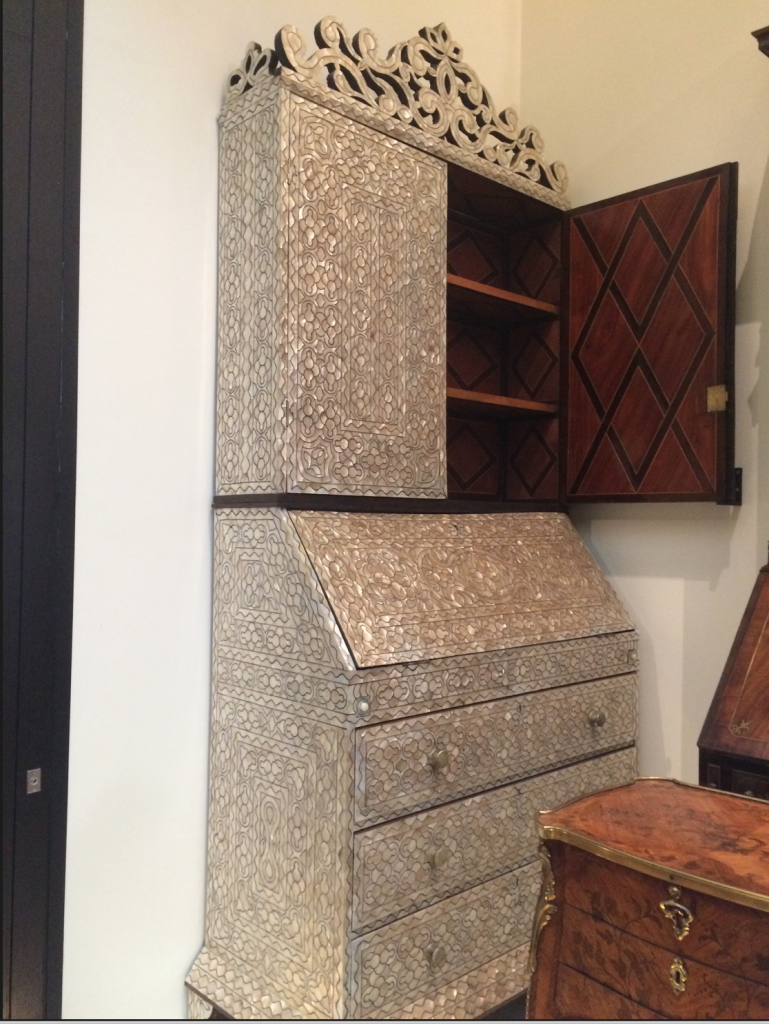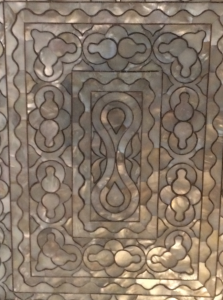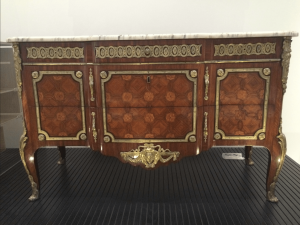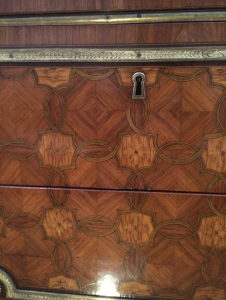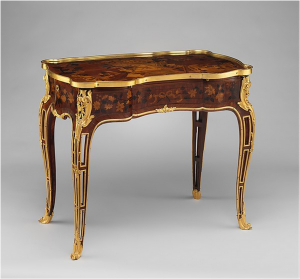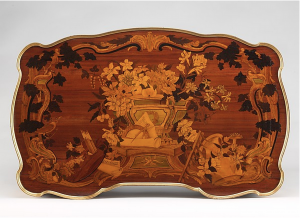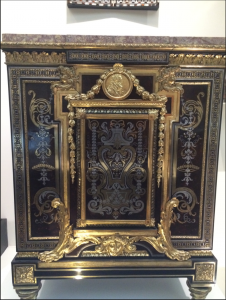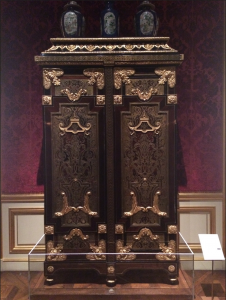I have always enjoyed visiting museums, but before enrolling in this class I never paid a lot of attention to furniture. Over spring break I had the opportunity to visit my sister who studies in London, and I made sure to pay special attention to furniture as I visited the museums. In particular I was blown away by the collection at the Victoria and Albert Museum, particularly one corridor which was designed to show a survey of furniture over the years. As you pass down the hallway there are little sections for different furniture techniques and movements. In front of each section, there was a small console through which a visitor could access additional images and information about the pieces.
In particular I was quite taken by the marquetry, a subject we do not focus on so much in our course. Below are images of marquetry I found especially compelling.
The piece at the Met that comes to mind when I think of marquetry is a desk commissioned by Madame du Pompadour, the mistress of Louis XV. Below is an image of the table (which can be seen in gallery 539), as well as a close up of the exquisite wood inlay. Encoded in this word are symbols of her art patronage, from music to painting to architecture. The colors, which look faded here, were originally bright and eye-catching, and were made with natural woods, or wood enhances with dyes.
Another piece that caught my eye at the V&A is the following cabinet attributed to André-Charles Boulle from around the year 1700. Something about it seemed familiar, and at first I could not pinpoint why. The style is very distinctive with its sharp corners and gilt bronze. My eyes latched onto the lions paw detailing, that support the front facing facade.
As it turns out, I had seen a cabinet from this workshop before. In the Wrightsman Galleries (Gallery 531 to be precise), stands a cabinet attributed to the same man in the same year. I remember when I first saw this cabinet in New York that I was surprised how odd it seemed. Little did I know that its brother rested across the pond.
What particularly fascinates me about this connection is the incredible distance between such similar pieces; I wonder about their history. Are they simply produced by the same workshop, or were they designed for the same set? Additionally, who is the man in the cameo from the cabinet in London? I would assume he commissioned one or both of the pieces, but he could have been a liege lord or king. This supposition is supported by the ornate robes and he wears and the wreath around his head. If he is a King, then attribution may be more difficult, as his image would have been on many pieces of decoration acquired by nobles. If I can find more about the acquisition timeline, I will include the information in a later post.
